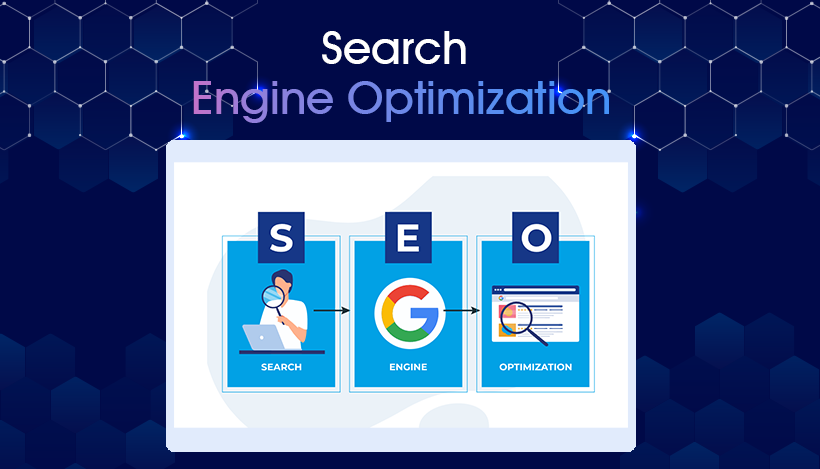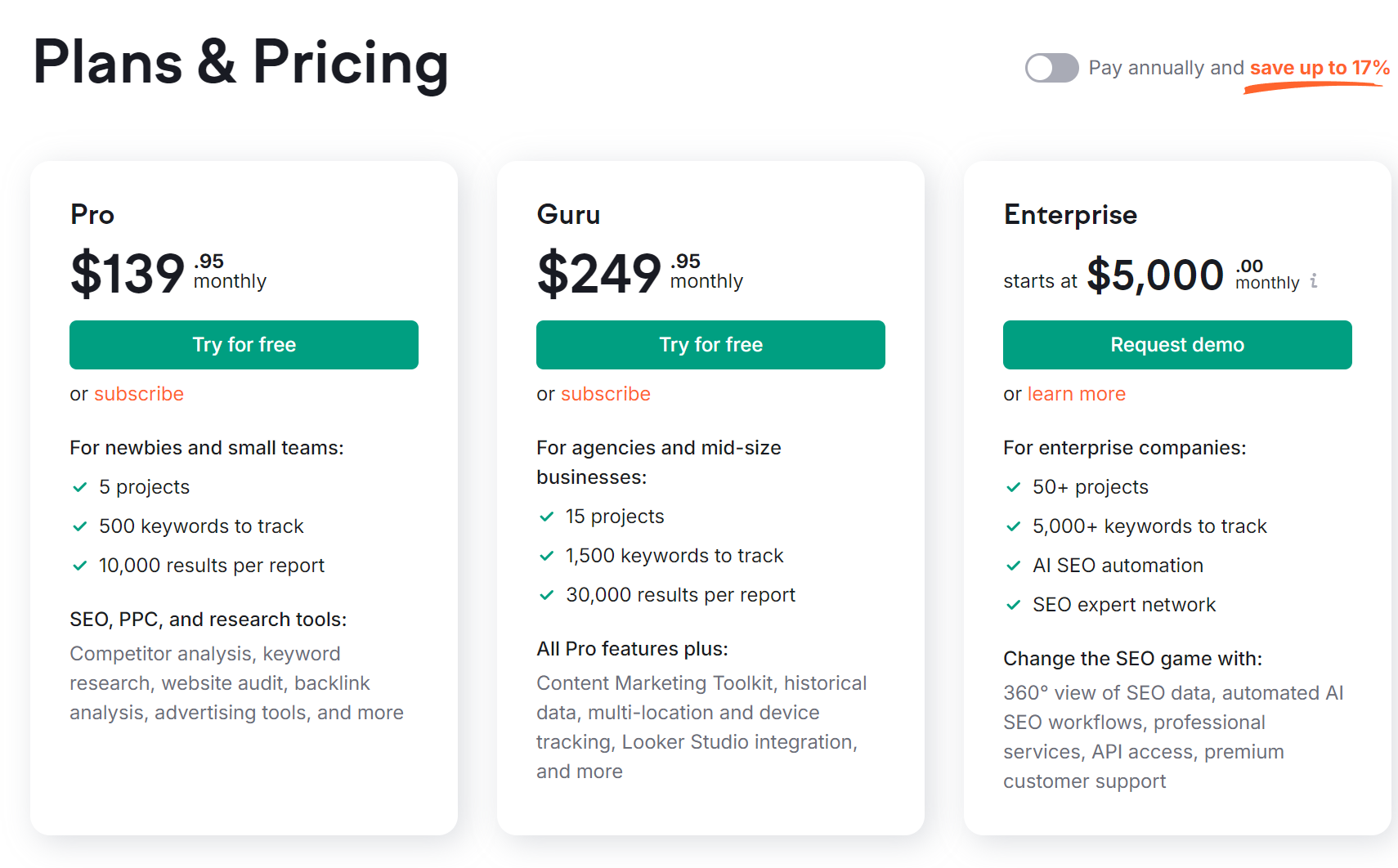Recently, I’ve been diving deep into SEO (Search Engine Optimization), which, in my opinion, is a critical component for the growth of any digital identity.
Through my research, I discovered two major KPIs (Key Performance Indicators) that every SEO project should focus on:
- 1. Increase in the number of keywords ranking on the first page of Google.
- 2. Improvement in organic traffic.

At present, there are a few key search engines on the web: Google, Bing, Baidu, and DuckDuckGo. However, the majority of SEO efforts focus on the obvious leader: Google Search.
If you optimize your website effectively for Google and manage to rank on its first page, chances are you’ll rank well on other search engines too. So, in this blog, we’ll focus on Google
Google’s Search Engine Ranking Factors
Google has never officially disclosed the exact workings of their search engine algorithm. However, they have shared insights into various ranking factors. It’s estimated that Google uses between 200 to 300 ranking factors to determine a website’s position on the SERPs.
Some of the most critical factors include:
- Website Speed: Faster loading sites rank higher.
- Quality Content: Content that provides value and is well-structured.
- Keyword Optimization: Proper use of relevant keywords in content.
- User Experience (UX): How easy and enjoyable the website is to use.
- High-Quality Backlinks: Links from authoritative websites.
- Domain Age: Older domains with a solid history tend to rank better.
- Meta Elements: Title tags, meta descriptions, and header tags.
The list of Google ranking factors goes on, and a successful SEO strategy requires studying as many of them as possible.
You can visit www.backlinko.com to learn more about Google ranking factors.
Key Milestones in an SEO Project
From my research, I’ve identified five essential milestones that can help structure an SEO project for optimal results:
- Keyword Research
- Analytics and Tracking
- Technical Fixes
- On-Page Optimization
- Off-Page Optimization
We start with Keyword Research, which is the foundation of any effective SEO strategy. This step is crucial, and let me emphasize something here: investing in a good SEO tool is essential if you’re serious about becoming an SEO expert. It’s one of those purchases you cannot skip.
SEMRUSH – A Must-Have Tool for SEO

To enhance our SEO efforts, I recommend using SEMRUSH, While the Pro Plan costs $139.95 per month, I know it’s quite expensive, especially for beginners. But trust me, this is one tool that’s indispensable for our work.
Breaking Down Keyword Research
Keyword research can be categorized into two main types:
- Cold Keyword Research: This involves finding new, untapped keywords that your site or content hasn’t yet targeted. It's all about discovering opportunities in uncharted areas.
- Warm Keyword Research: This focuses on optimizing existing keywords, improving their rankings, and capturing more search traffic from terms you’re already targeting.
When you have paid access to SEMRUSH, you’ll find a wide range of tools available. As you explore, you’ll need to research and learn about these tools to maximize their potential. However, for now, the two most important ones for keyword research are:
- Organic Research
- Keyword Magic Tool
These two options will handle about 80% of your keyword research tasks, so it’s crucial to become familiar with them.
- Cold Keywords – Use Organic Research to find untapped opportunities and identify keywords that competitors are ranking for.
- Warm Keywords – Use the Keyword Magic Tool to refine and optimize your existing keyword strategy by finding new variations and related terms.
When conducting your research, it’s essential to apply creativity and common sense to identify the right keywords for your website. The tools will guide you, but your intuition and strategic thinking will play a significant role in choosing the most effective keywords.
Understanding Keyword Types During Research
As you dive into the keyword research process, you’ll come across different types of keywords :
- Short-Tail Keywords – Broad and highly competitive (e.g., “coffee”).
- Long-Tail Keywords – More specific and less competitive (e.g., “best organic coffee beans for cold brew”).
- Medium-Tail Keywords – Somewhere in between—moderately specific and competitive.
The ideal approach is to combine all three Long-Tail + Medium-Tail + Short-Tail —to create a well-balanced SEO strategy. This way, you can target high-volume keywords while also capturing traffic from niche and intent-driven searches.
Keyword Golden Ratio (KGR)
One smart technique to find low-competition, high-potential keywords is the Keyword Golden Ratio (KGR).
KGR Formula :
KGR = Number of Google results with the keyword in the title (allintitle:) ÷ Monthly Search Volume
If the result is less than 0.25, the keyword is considered a low-competition gem, meaning it's easier to rank for—even with a newer site.
This technique is especially helpful when working on cold keywords or launching new pages with fresh content.
The Importance of Tracking Keywords (Using SEMRUSH)
Once you’ve done your keyword research and started implementing those keywords across your website, the next crucial step is tracking them.
Tracking keywords helps you :
- Monitor Performance – See how your keywords are ranking over time.
- Measure Progress – Know whether your SEO efforts are working.
- Identify Opportunities – Discover which keywords are climbing and which need more attention.
- Track Competitors – Compare your rankings against competitors targeting the same keywords.
- Adjust Strategy – If certain keywords aren’t performing well, you can pivot and optimize accordingly.
Why Use SEMRUSH for Keyword Tracking ?
SEMRUSH offers a dedicated tool called Position Tracking, which lets you :
- Track keyword rankings daily across multiple devices and locations.
- Get visibility trends, estimated traffic, and SERP features (like featured snippets).
- Monitor your top competitors side-by-side.
- Set alerts for any major ranking changes.
Technical Fixes – The Backbone of SEO Health
Before you can climb the rankings, your website must be technically sound. Technical SEO refers to the behind-the-scenes improvements that help search engines crawl, index, and understand your website effectively.
Even the best content won’t perform well if your site is slow, broken, or difficult for search engines to access. That’s where technical fixes come in.
Common Technical Fixes to Focus On :
-
Fixing Broken Links & 404 Errors
Dead links and error pages harm both user experience and SEO. SEMRUSH’s Site Audit tool can detect these quickly so you can repair or redirect them. -
Improving Website Speed
Page speed is a key ranking factor. Compress images, leverage browser caching, and minimize unnecessary code to make your site load faster. -
Mobile Responsiveness
Google prioritizes mobile-friendly websites. Make sure your layout, fonts, and buttons work well across all screen sizes. -
Securing Your Website (HTTPS)
Security is essential. Google favors websites with SSL certificates (HTTPS). If your site still runs on HTTP, it’s time to upgrade. -
Fixing Crawl Errors
Use tools like Google Search Console and SEMRUSH to detect crawl issues and make sure search engine bots can properly access your content. -
XML Sitemap Optimization
Ensure your sitemap is up-to-date and submitted to search engines. This helps them understand the structure of your site. -
Robots.txt Configuration
This file tells search engines which pages to crawl and which to ignore. A misconfigured robots.txt can block important pages from being indexed. -
Canonical Tags
Prevent duplicate content issues by properly setting up canonical tags to guide Google on which version of a page is the “master” copy.
Technical Fixes Matter
Think of technical SEO like the foundation of a house. If the base is shaky, no matter how beautiful your content is, it won’t hold up. By fixing technical issues early on, you ensure that your content has the best possible chance to rank—and stay ranked.
You can use SEMRUSH or AIOSEO Site Audit regularly to catch problems early and maintain a healthy, optimized website.
On-Page Optimization – Fine-Tuning for Better Rankings
Once your website’s technical foundation is solid, the next crucial step is On-Page Optimization. This is the process of optimizing individual web pages to rank higher in search engines and attract more relevant traffic.
While technical SEO focuses on how search engines access your site, on-page SEO focuses on what they see and understand once they get there.
Key Elements of On-Page Optimization :
-
Title Tags
Every page should have a unique, keyword-rich title that clearly describes the content. Keep it concise (50–60 characters) and include your main keyword toward the beginning.
-
Meta Descriptions
This is your chance to grab attention in the search results. A compelling meta description (under 160 characters) can improve your click-through rate, even if you're not in the top position.
-
Header Tags (H1, H2, H3...)
Use header tags to structure your content. The H1 should contain your main keyword and appear only once. Subheadings (H2, H3) help organize information and improve readability.
-
Keyword Placement
Include your target keywords naturally throughout the page—in the first paragraph, headers, body content, image alt text, and URLs. But avoid keyword stuffing.
-
Content Quality
Google loves helpful, original, and relevant content. Focus on answering user intent and providing real value. Well-written content that keeps users engaged will always perform better.
-
Internal Linking
Link to other relevant pages on your website. This helps users navigate your site better and helps search engines crawl and understand your content hierarchy.
-
Image Optimization
Use compressed, properly named images with descriptive alt text. This improves accessibility and gives Google more context about your content.
-
URL Structure
Use short, descriptive URLs that include your target keywords. Avoid long, complex strings of numbers and unnecessary parameters.
On-page SEO ensures that each page of your site is fully aligned with your target keywords and user intent. It tells search engines :
“Here’s what this page is about—and here’s why it’s worth ranking.”
Off-Page Optimization – Building Your Website’s Authority
While on-page optimization focuses on improving the content and structure within your website, Off-Page Optimization is all about boosting your site’s authority, trust, and visibility outside of it.
In simple terms, off-page SEO is how the rest of the internet perceives your website. The stronger your presence beyond your site, the more likely Google is to consider your site as trustworthy and rank it higher.
Key Elements of Off-Page Optimization :
Backlink Building
Backlinks (links from other websites to yours) are one of Google’s top ranking signals. Focus on earning high-quality, relevant, and authoritative backlinks rather than just a large number of random ones.
- Guest posting
- Creating share-worthy content
- Reaching out to industry blogs or partners
- Listing in trusted directories
Social Media Engagement
While social signals aren't direct ranking factors, sharing your content on platforms like Facebook, LinkedIn, Twitter, and Instagram can help drive traffic and get your content noticed by the right audience—including those who might link to it.
Brand Mentions
Even when your brand is mentioned without a link, it can still positively affect your online reputation and search visibility. Tools like SEMRUSH Brand Monitoring can help you track who’s talking about your brand.
Local SEO (for location-based businesses)
Optimize your Google Business Profile, gather positive reviews, and get listed in local directories like Yelp or Yellow Pages to boost your presence in local searches.
Influencer & PR Outreach
Collaborate with influencers or get featured in online publications. This helps improve both visibility and credibility—especially when those mentions include backlinks.
Wrapping Up
We cover all the important topic here for our seo strategy. However, remember that SEO is not a one-time task—it’s an ongoing practice. The real key to success lies in consistent research and execution. The more time and effort you put into learning, testing, and optimizing, the better the results you'll achieve over time.
SEO is a marathon, not a sprint. Keep refining your strategies, stay updated with the latest trends, and most importantly, continue practicing!




